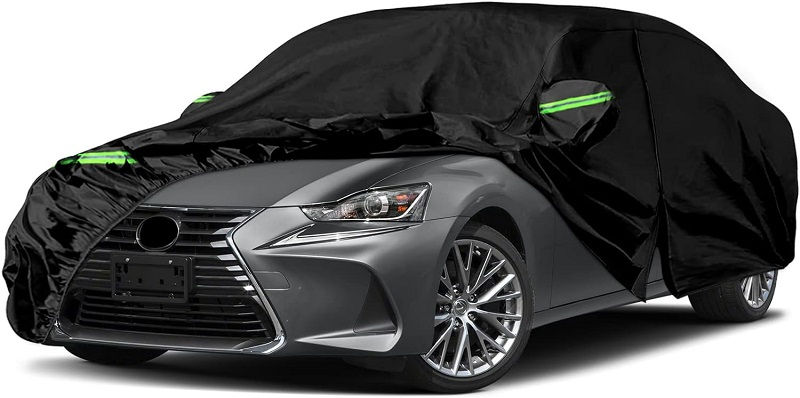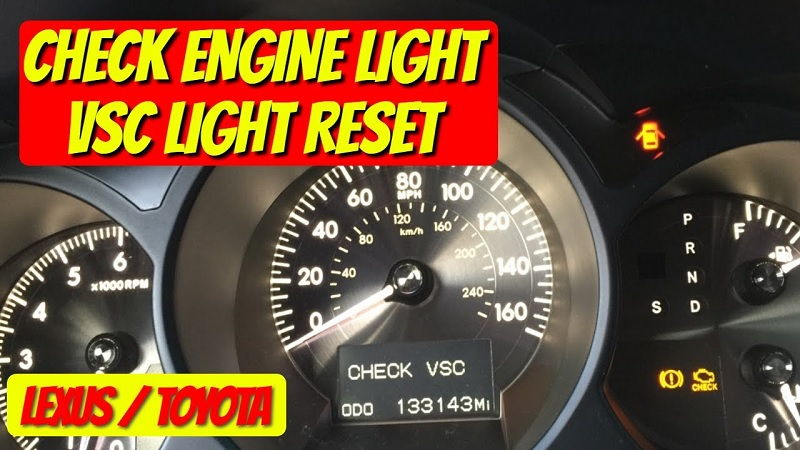This post contains affiliate links. This means I will make a commission at no extra cost to you should you click through and make a purchase [ “As an Amazon Associate, I earn from qualifying purchases.” ]. Read the full disclosure here.
Check VSC Lexus IS250 GuideMechanic.Com Are you a proud owner of a Lexus IS250 and wondering what the “Check VSC” warning light means? Well, you’ve come to the right place! In this blog article, we will delve into the details of the Check VSC system in your Lexus IS250, providing you with a comprehensive understanding of its purpose, how it works, and what steps you can take to troubleshoot any issues that may arise.
First and foremost, let’s understand what VSC stands for. VSC stands for Vehicle Stability Control, which is a safety system designed to help maintain control and stability of your vehicle, especially during challenging driving conditions or emergency maneuvers.
It constantly monitors various sensors and uses advanced technology to detect any potential loss of control.
When the Check VSC light illuminates on your dashboard, it indicates that there may be a malfunction or an issue with the VSC system that requires attention.
Understanding the Check VSC Warning Light

When the Check VSC warning light appears on your dashboard, it can be concerning and leave you wondering about its significance.
Understanding the meaning behind this warning light is crucial for ensuring your safety and addressing any potential issues with your Lexus IS250’s VSC system.
There are several possible reasons why the Check VSC light may turn on. It could indicate a malfunction in the VSC system itself, such as a faulty sensor or an electrical problem.
It can also be triggered by issues with related systems, such as the ABS (Anti-lock Braking System) or the TRAC (Traction Control) system. In some cases, the light may even come on due to a loose gas cap or a low battery voltage.
Possible Causes of the Check VSC Light Activation
Let’s explore some of the common causes that may lead to the activation of the Check VSC light in your Lexus IS250:
1. Sensor Malfunction: The VSC system relies on various sensors, such as wheel speed sensors, steering angle sensors, and yaw rate sensors, to gather data and make necessary adjustments. If any of these sensors malfunction or provide inaccurate readings, it can trigger the Check VSC light.
2. Electrical Issues: Electrical problems, such as damaged wiring or a faulty control module, can disrupt the communication between different components of the VSC system. This can result in the activation of the Check VSC warning light.
3. ABS System Malfunction: The ABS system and the VSC system are closely interconnected. If there is a problem with the ABS system, it can affect the VSC system’s functionality and lead to the Check VSC light turning on.
4. TRAC System Issues: Similar to the ABS system, the TRAC system (Traction Control) works in conjunction with the VSC system. If there is a fault in the TRAC system, it can trigger the Check VSC light.
5. Loose Gas Cap: It may seem surprising, but a loose or improperly tightened gas cap can also cause the Check VSC light to illuminate. This is because a loose gas cap can lead to an evaporative emissions leak, which triggers the warning light.
6. Low Battery Voltage: Insufficient battery voltage can disrupt the proper functioning of various systems in your vehicle, including the VSC system. If the battery voltage drops too low, it can activate the Check VSC light.
Implications of Ignoring the Check VSC Warning Light
While it may be tempting to ignore the Check VSC warning light, doing so can have potential consequences.
See Also: Lexus Won’t Start But Has Power
The VSC system plays a crucial role in maintaining the stability and control of your vehicle, especially in hazardous or unpredictable driving conditions.
Ignoring the warning light can compromise your safety on the road. The VSC system may not function as intended, increasing the risk of skidding, loss of control, or even accidents.
Additionally, if the Check VSC light is triggered by a problem in a related system, such as the ABS or TRAC system, ignoring it may result in further damage to those components.
It is always recommended to address the Check VSC warning light as soon as possible by performing the necessary troubleshooting steps or seeking professional help. Doing so will not only ensure your safety but also prevent potential expensive repairs in the future.
Troubleshooting the Check VSC System

When the Check VSC light turns on, it’s important to take immediate action to diagnose and resolve the underlying issue.
While some problems may require the expertise of a qualified mechanic or dealership, there are troubleshooting steps you can perform at home to narrow down the possible causes.
Step 1: Check for Loose Gas Cap
Start by inspecting your gas cap to ensure it is properly tightened. A loose or improperly secured gas cap can trigger the Check VSC light.
Remove the gas cap and reattach it firmly, ensuring a tight seal. Once done, drive your vehicle for a few miles to see if the warning light disappears. If the gas cap was the culprit, the light should turn off.
Step 2: Check Battery Voltage
A low battery voltage can cause various warning lights, including the Check VSC light, to illuminate. Use a multimeter to measure your vehicle’s battery voltage.
A healthy battery should have a voltage reading of around 12.6 volts. If the voltage is significantly lower, it may indicate a weak or failing battery. Consider charging or replacing the battery if necessary.
Step 3: Inspect Wheel Speed Sensors
The wheel speed sensors play a crucial role in the VSC system, as they provide data about the rotational speed of each wheel to the control module.
If any of these sensors are damaged or covered in dirt or debris, it can trigger the Check VSC light. Inspect each wheel speed sensor for any physical damage, such as broken wires or loose connections.
Clean the sensors using a gentle brush and compressed air to remove any dirt or debris that may be obstructing their functionality.
Step 4: Check ABS and TRAC Systems
As mentioned earlier, the Check VSC light can be activated by issues in the ABS or TRAC systems. To troubleshoot these systems, start by checking the ABS fuse and relay.
Consult your vehicle’s manual to locate the fuse box and identify the corresponding fuses and relays. If any of them are blown or faulty, replace them with new ones of the same rating.
If the fuses and relays are in good condition, you can attempt to reset the ABS and TRAC systems by disconnecting the vehicle’s battery for a few minutes.
This can sometimes clear any temporary faults or glitches in the systems. However, keep in mind that disconnecting the battery may also reset other settings, such as radio presets or clock time.
Step 5: Professional Diagnostics
If the Check VSC light persists after performing the above troubleshooting steps, it is recommended to seek professional diagnostics from a qualified mechanic or dealership.
They have the necessary tools, expertise, and access to diagnostic equipment to accurately identify and resolve the underlying issue.
A professional diagnostic scan will retrieve error codes stored in the vehicle’s onboard computer system, providing valuable information about the specific problem causing the Check VSC light to illuminate.
Based on the scan results, the mechanic can then proceed with targeted repairs or component replacements to restore the proper functioning of the VSC system.
Cost of Repairing the Check VSC System

One of the concerns when dealing with any automotive issue is the potential cost of repairs. The cost of repairing the Check VSC system can vary depending on several factors, including the specific problem, the extent of the damage, and the labor rates in your area. Here are some cost-related aspects to consider:
1. Diagnostic Fees
When seekingprofessional help for the Check VSC system, it’s important to keep in mind that diagnostic fees may apply.
These fees cover the time and expertise required to identify the underlying issue causing the Check VSC light to illuminate.
Diagnostic fees can vary depending on the service provider, but they are typically a necessary investment to accurately diagnose the problem.
2. Component Replacements
The cost of component replacements will depend on the specific part that needs to be replaced and whether it is an OEM (Original Equipment Manufacturer) part or an aftermarket option.
OEM parts are generally more expensive but offer a higher level of quality and compatibility with your Lexus IS250.
Aftermarket parts can be more affordable, but their quality may vary. Your mechanic or dealership can provide you with an estimate for the cost of the necessary components.
3. Labor Costs
Labor costs can vary depending on the complexity of the repair and the hourly rates of the service provider.
The Check VSC system in the Lexus IS250 involves intricate components and may require specialized knowledge and tools for proper diagnosis and repair.
It’s important to choose a reputable mechanic or dealership that specializes in Lexus vehicles to ensure the best quality of work and value for your money.
4. Warranty Coverage
If your Lexus IS250 is still under warranty, certain repairs related to the Check VSC system may be covered.
It’s essential to review your warranty documentation or consult with your dealership to determine what repairs and components are eligible for warranty coverage. Taking advantage of warranty coverage can significantly reduce your out-of-pocket expenses.
5. Preventive Maintenance
While not directly related to the cost of repairing the Check VSC system, preventive maintenance plays a crucial role in preventing potential issues and reducing the overall cost of ownership.
See Also: Lexus Maintenance Required Meaning
Regularly servicing your Lexus IS250, including inspections of the VSC system components, can help identify and address any potential problems before they escalate. By investing in preventive maintenance, you can potentially avoid costly repairs down the line.
Importance of Regular Maintenance for the Check VSC System
Regular maintenance is vital for ensuring the optimal performance and longevity of the Check VSC system in your Lexus IS250.
By following recommended maintenance practices, you can prevent potential issues, maintain safety on the road, and extend the lifespan of your vehicle’s VSC system.
Scheduled Inspections
Adhering to the manufacturer’s recommended maintenance schedule is essential for the longevity of your vehicle’s VSC system.
Regular inspections, typically performed during routine service intervals, allow technicians to check the overall condition of the VSC system, including sensors, control modules, and related components. Any signs of wear, damage, or potential malfunctions can be identified early on and addressed promptly.
Fluid Checks and Replacements
Fluids play a crucial role in the proper functioning of various systems in your vehicle, including the VSC system.
Regularly checking and replacing fluids, such as brake fluid and power steering fluid, according to the manufacturer’s recommendations ensures optimal performance and reduces the risk of fluid-related issues that could trigger the Check VSC light.
Tire Maintenance
Proper tire maintenance is essential for the overall performance and effectiveness of the VSC system. Ensuring that your tires are properly inflated, have sufficient tread depth, and are in good condition helps maintain traction and stability.
Regularly inspecting and rotating your tires can prevent uneven wear and maintain optimal performance of the VSC system.
Addressing Warning Signs Promptly
If you notice any warning signs or unusual behavior while driving, such as increased braking distance, steering difficulties, or unusual noises, it’s important to address them promptly.
These signs could indicate potential issues with the VSC system or related components. Ignoring such warning signs can lead to more severe problems, compromising your safety and potentially increasing repair costs.
Qualified Maintenance Providers
When it comes to maintaining the VSC system in your Lexus IS250, it’s crucial to rely on qualified maintenance providers.
Authorized dealerships or reputable mechanics with experience and expertise in Lexus vehicles can offer specialized knowledge and access to the latest diagnostic equipment.
Choosing qualified maintenance providers ensures that your vehicle receives the proper care and attention it deserves.
Frequently Asked Questions (FAQs) about Check VSC Lexus IS250
Curious about some common queries related to the Check VSC system in your Lexus IS250? Here are answers to frequently asked questions to address any lingering doubts or concerns you may have:
Q: How do I know if the Check VSC light is a serious problem?
A: While the Check VSC light should not be taken lightly, the severity of the problem can vary. It’s important to address the issue promptly to prevent potential safety risks or further damage.
Consulting a professional mechanic or dealership for a proper diagnosis is recommended to determine the seriousness of the problem.
Q: Can I continue driving with the Check VSC light on?
A: It’s generally not advisable to continue driving with the Check VSC light illuminated. The VSC system plays a crucial role in maintaining control and stability, especially during challenging driving conditions.
Ignoring the warning light may compromise your safety and increase the risk of accidents. It’s best to address the issue promptly and seek professional assistance or perform necessary troubleshooting steps.
Q: Can a faulty wheel alignment trigger the Check VSC light?
A: Yes, a faulty wheel alignment can potentially trigger the Check VSC light. Wheel alignment issues can affect the VSC system’s ability to accurately detect and correct any potential loss of vehicle control.
If you suspect a wheel alignment problem, it’s recommended to have it inspected and corrected by a qualified technician.
Q: How frequently should I have my VSC system inspected?
A: The frequency of VSC system inspections can vary depending on factors such as driving conditions and manufacturer recommendations.
As a general guideline, it’s advisable to have your VSC system inspected during routine maintenance intervals or whenever you notice any warning signs or unusual behavior while driving.
Q: Can I reset the Check VSC light myself?
A: In some cases, disconnecting the vehicle’s battery for a few minutes can reset the Check VSC light. However, keep in mind that this method may also reset other settings and erase stored codes that could help diagnose the underlying issue.
It’s best to consult a professional mechanic or dealership for a proper diagnosis and to reset the Check VSC light if necessary.
Tips for Preventing Check VSC System Issues
Prevention is key when it comes to avoiding Check VSC system problems. By following these effective tips, you can minimize the risk of encountering issues with your Lexus IS250’s VSC system:
1. Regular Maintenance
Adhering to the manufacturer’s recommended maintenance schedule is crucial for the overall health of your vehicle, including the VSC system.
Regular inspections, fluid checks, and component replacements as per the recommended intervals can help identify and address potential issues before they escalate.
2. Safe Driving Practices
Practicing safe driving habits can significantly reduce the strain on your vehicle’s VSC system. Avoid aggressive driving maneuvers, excessive speeding, and sudden braking.
By driving defensively and responsibly, you can minimize the risk of triggering the Check VSC light due to sudden loss of control.
3. Tire Maintenance
Proper tire maintenance is essential for the optimal performance of the VSC system. Regularly check your tire pressure, ensure proper inflation, and inspect for any signs of damage or wear.
Rotate your tires as recommended to promote even wear and maintain traction. Adequate tire maintenance contributes to the stability and effectiveness of the VSC system.
4. Avoid Ignoring Warning Signs
If you notice any warning signs, unusual noises, or changes in vehicle behavior, such as increased braking distance or difficulty steering, address them promptly.
Ignoring warning signs can lead to more severe problems and potential safety risks. Consult a professional mechanic or dealership to diagnose and resolve any underlying issues.
5. Quality Fuel and Fluids
Using high-quality fuel and fluids, such as gasoline and engine oil recommended by the manufacturer, can contribute to the overall performance of your vehicle, including its VSC system.
Quality fuel and fluids help maintain the proper functioning of various components and reduce the risk of issues that may trigger the Check VSC light.
Related video of Check VSC Lexus IS250: A Comprehensive Guide to Understanding and Troubleshooting
- Project Trucks for Sale Cheap - July 1, 2025
- Salvage Title Trucks for Sale - July 1, 2025
- Restored Classic Trucks for Sale - July 1, 2025

